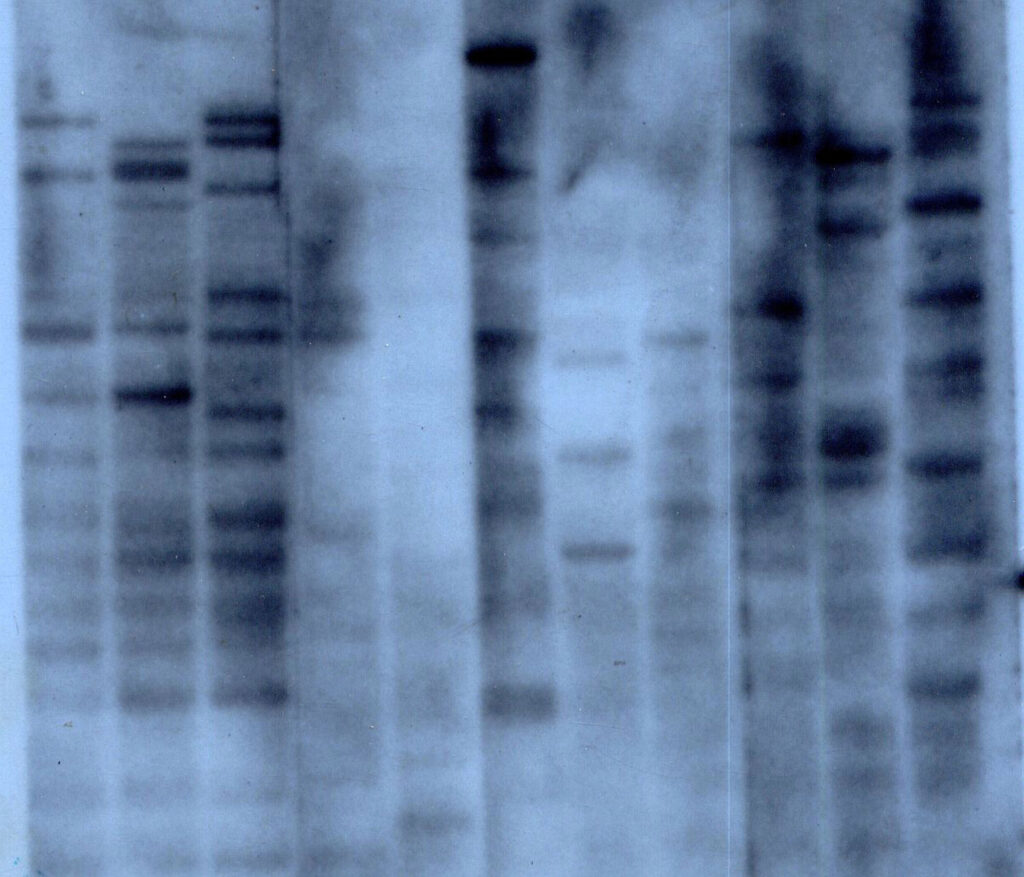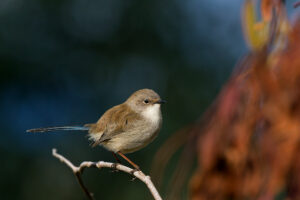Mating Systems
Mating Systems and Genetic Diversity
Mating systems describe the patterns of mate association and reproductive strategies that different species adopt. They are shaped by evolutionary pressures and ecological factors, influencing genetic diversity and social structures within populations. Four main types of mating systems are generally recognized in animals: monogamy, polygyny, polyandry, and promiscuity. These systems often have profound effects on the genetic diversity of a species.
Monogamy is characterized by a pair bond between one male and one female. The bond may last for a single breeding season or extend over multiple seasons. Monogamous pairs often share parental responsibilities, cooperating in activities such as nest building, guarding, and feeding offspring. In birds like albatrosses and some mammals like wolves, monogamous pairs form stable family units, enhancing offspring survival through biparental care. Despite this outward stability, genetic studies have revealed that extra-pair copulations are common in many monogamous species, resulting in offspring sired by individuals outside the primary pair bond. This behavior can increase genetic diversity by introducing additional alleles into the gene pool and reducing the risk of inbreeding.
Polygyny involves one male mating with multiple females. This system is widespread among mammals and some bird species and can manifest in several forms. In “resource defense polygyny,” males control access to resources such as food or nesting sites that females require, attracting mates. In “female defense polygyny,” males directly defend a group of females (a harem) and prevent other males from gaining access to them. The reproductive success of males is highly skewed, with dominant individuals achieving the most matings, often resulting in reduced genetic diversity. However, female choice and competition among males can help maintain genetic variation.
Polyandry, the reverse of polygyny, is where one female mates with multiple males. This system is relatively rare in nature but can occur in species like the spotted sandpiper or the Jacana bird. Here, males invest heavily in parental care, often incubating eggs or caring for young, while females mate with several males. This system promotes genetic diversity as multiple fathers contribute to the offspring, increasing the genetic variation within broods. In some cases, polyandry can enhance offspring survival by increasing genetic compatibility or reducing the impact of harmful mutations.
Promiscuity involves both males and females mating with multiple partners without forming exclusive bonds. It is common in many primates and small mammals. This system can enhance genetic diversity by ensuring a wider distribution of alleles and reducing the likelihood of inbreeding depression. It can also increase the chances of successful reproduction through genetic bet-hedging. However, it may also lead to intense sperm competition among males, resulting in the evolution of larger testes or specialized reproductive strategies to increase their success.
The interplay between these mating systems and genetic diversity is significant. In monogamy, fidelity can reduce genetic diversity, while extra-pair copulations can counterbalance this. Polygyny often skews reproductive success toward dominant males, reducing genetic diversity in the next generation. In contrast, polyandry and promiscuity generally maintain higher genetic diversity by spreading reproductive opportunities across more individuals. Thus, understanding these systems provides crucial insights into the evolutionary pressures shaping genetic structure and adaptation within animal populations.
Application of Molecular Tools in Understanding Mating Systems
DNA fingerprinting revolutionized our understanding of mating systems by allowing researchers to genetically analyze parent-offspring relationships, revealing the true nature of reproductive behavior within animal populations. Before this technology, many assumptions about monogamy, polygamy, or other mating systems were based on observed behaviors or social structures, which often did not reflect genetic reality. DNA fingerprinting involves the analysis of highly variable regions in the genome known as “minisatellites,” which consist of short, repeating DNA sequences. The variation in the number and sequence of these repeats is unique for each individual (except identical twins), creating a distinctive genetic profile that can be used to identify relationships between individuals. By comparing the genetic profiles of potential parents with those of their offspring, researchers have discovered surprising patterns in many species, revealing a prevalence of extra-pair copulations and multiple paternities in socially monogamous systems. For instance, DNA fingerprinting showed that extra-pair paternity is common in birds traditionally thought to be monogamous. In tree swallows and blue tits, more than half of the offspring in a single brood may be fathered by males other than the social partner of the female. This discovery led to new insights into the complexities of avian mating systems and the evolution of reproductive strategies like sperm competition.

Microsatellites, also known as short tandem repeats (STRs), are another type of highly variable genetic marker. While conceptually similar to minisatellites, they consist of shorter repeating DNA sequences, generally 2-6 base pairs in length. Their high mutation rates result in numerous alleles, making them ideal for genetic studies. Unlike DNA fingerprinting, which analyzes patterns across multiple minisatellite regions simultaneously, microsatellite analysis examines a smaller number of specific loci. By focusing on these loci, researchers can determine individual genotypes and assess genetic variation, parentage, and population structure more precisely.In parentage analysis, microsatellites offer a high level of discrimination due to the large number of alleles available per locus. This makes them particularly useful for reconstructing pedigrees in wildlife populations and understanding the genetic consequences of different mating systems. For instance, researchers have used microsatellites to determine paternity in polygynous mammals like seals and lions, showing that reproductive success is often skewed toward dominant males. Similarly, studies on socially monogamous birds using microsatellites have confirmed widespread extra-pair paternity.
Extra Pair Paternity (EPP)
Extra-pair paternity refers to the phenomenon where offspring within a brood or litter are sired by males other than the social partner or mate of the female. This occurrence challenges traditional views of animal mating systems, particularly in species previously thought to exhibit strict monogamy. Extra-pair paternity is widespread across many taxa, from birds to mammals, and plays a significant role in shaping the genetic structure and evolutionary dynamics of populations. The classic case study illustrating extra-pair paternity involves the superb fairy-wren (Malurus cyaneus), a small Australian bird that appears monogamous at first glance. Males and females form long-term pair bonds, jointly defending territory and raising young. However, genetic studies using DNA fingerprinting and microsatellites revealed a surprising truth: a high percentage of chicks (often more than 70%) were sired by males outside the primary pair bond.
This discovery in superb fairy-wrens has significant consequences and implications. First, it underscores the complexity of avian mating systems, demonstrating that social and genetic monogamy can be decoupled. While the social pair works together to raise the young, females mate with multiple males, potentially seeking genetic benefits such as increased genetic diversity and quality in their offspring. This behavior can lead to a variety of evolutionary and ecological outcomes.

- Genetic Diversity: Extra-pair paternity introduces new genetic material into the brood, enhancing the genetic diversity of the offspring. This diversity is crucial for the adaptive potential of the population, allowing it to better respond to changes in the environment and reducing the risk of inbreeding depression.
- Sexual Selection: The phenomenon supports the role of sexual selection in evolution. Females may choose extra-pair mates based on traits that signal genetic fitness, such as vibrant plumage, vigorous displays, or good health. This selection pressure encourages the development of these traits in males, driving evolutionary change.
- Sperm Competition: With the possibility of multiple males fertilizing the same set of eggs, sperm competition becomes a significant factor. Males may evolve strategies such as increased sperm count or faster-swimming sperm to ensure their paternity over competitors.
- Parental Investment: The revelation of extra-pair paternity can also affect parental care patterns. Males might adjust their investment in offspring based on the certainty of their paternity. In some species, males reduce their contribution to parental care if there is a high risk of cuckoldry, while in others, the risk is mitigated by the benefits of maintaining a pair bond or due to difficulty in assessing paternity.
- Social Structure and Conflict: The dynamics of extra-pair paternity can lead to complex social interactions and conflicts within populations. It may influence the formation of territories, the stability of pair bonds, and the interactions among neighbors and conspecifics.
Extra-pair paternity (EPP) presents a significant evolutionary challenge for males in many species, particularly those that invest heavily in parental care. The risk of investing in offspring that are not genetically their own can lead to significant evolutionary losses for males. As a result, males across various species have evolved a range of strategies to counteract the risk of EPP, enhancing their chances of reproductive success and ensuring that their investments are directed towards their own genetic offspring.
One of the primary strategies is mate guarding, where males closely monitor and control the movements and interactions of their mates, especially during fertile periods. This behavior is widespread among birds, mammals, and even insects. For example, in many bird species, males stay close to their mates during the breeding season, following them closely and often interrupting interactions with other males. This reduces the opportunities for females to engage in extra-pair copulations.
Increased vigilance and aggression toward potential rivals is another strategy males use to prevent EPP. Males may display aggressive behaviors toward other males that approach their mate or territory. This not only discourages rivals but also signals strength and fitness to their mate, potentially reinforcing the pair bond and deterring the female from seeking extra-pair mates. In many mammalian species, such as deer and primates, males often fight to establish dominance, and the dominant male gets exclusive mating rights with females in the area, reducing the likelihood of EPP.
Sperm competition is an evolutionary adaptation that has arisen in response to EPP. In species where females mate with multiple males, the sperm of different males compete to fertilize the eggs. This has led to various adaptations, including increased sperm production, changes in sperm morphology to enhance speed and competitiveness, and even the development of copulatory plugs in some species, which block further matings by the female. For instance, in many rodent species, males produce copulatory plugs after mating, which can physically prevent other males from mating with the female immediately afterward.
Cryptic female choice is a phenomenon where females have the ability to influence which male’s sperm fertilizes their eggs. In response, males have evolved traits that may influence this choice in their favor. This includes producing more attractive or stimulating seminal fluids that can influence the female’s reproductive tract to favor their sperm. In some bird species, males provide more parental care or resources to the females, which can increase the female’s reliance on the male and reduce her motivation to seek extra-pair copulations.
Paternity assurance through frequent copulations is another strategy where males attempt to ensure their paternity by increasing the frequency of mating with their partner, especially close to the time of ovulation. This ensures a higher likelihood that their sperm will be the ones to fertilize the eggs. This is seen in many species, including some primates and birds, where males initiate copulations more frequently when the female is most fertile.
Media Attributions
- dnafingerprinting © Alec Jeffreys is licensed under a CC BY (Attribution) license
- Superb fairywren © Patrick Kavanagh is licensed under a CC BY (Attribution) license

